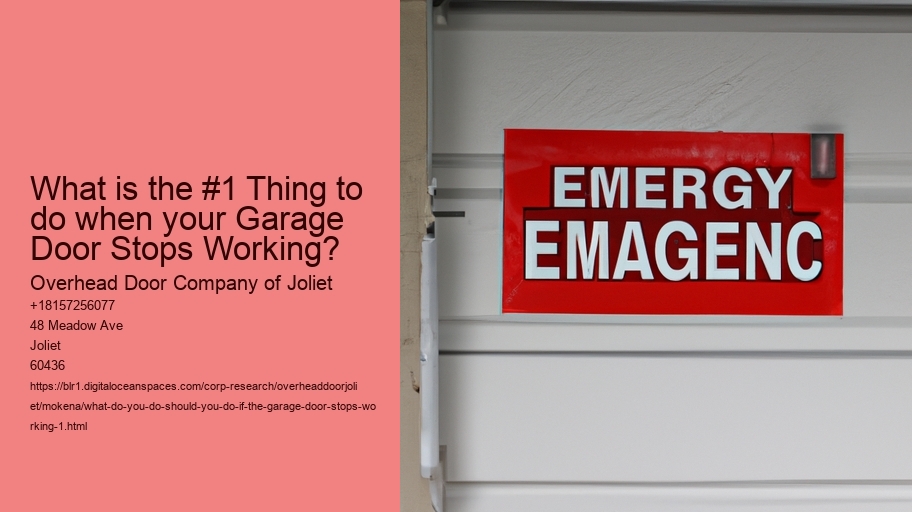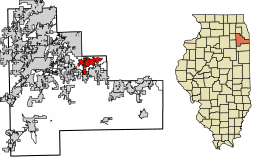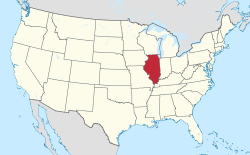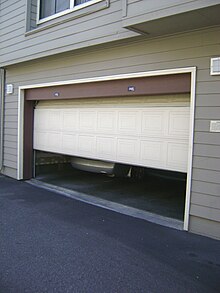Determine the Garage's Type Door and Opener
It is crucial to know the kind of garage opener and door that you have before you begin troubleshooting. .
Roll-up garage doors which are often used in commercial environments, are made from Slats that are folded into coils.
The tilt-up door, on the contrary is a solid single piece that opens by tilting inward and upwards. Belt-drive garage door openers have a lower noise however they utilize an elastic band instead of chains.
What do you do should you do if the garage door stops working? - ice
- chain drive
- noise
- wall
The next thing to do is checking your garage door opener and identify the model. Make sure to check the plug and breaker to ensure that the opener is operating. Check the manual release cable to be sure it isn't been pulled. This could cause the door to be disconnected from the opener. Review the rollers and tracks of the door for any damage or obstructions and remove any obstructions.
If necessary, lubricate the moving parts. Lack of lubrication may result in them becoming stuck or become stuck.Resetting the opener will fix any electronic issues. Consult the manual of the model you are using to know the specific steps. Some openers are reset by pressing an icon, while other require that the unit be unplugged and after that, it must be re-plugged.
The tension on springs can be high, and it could be hazardous to repair them without the proper tools.
When your garage door suddenly stops functioning then you need to speak with an expert.
Examine for debris or obstructions.
If your garage door suddenly stops working, it can be both perplexing and frustrating, especially if it's a part of your daily routine.
One of the most important and most practical steps to consider when you are faced with this problem is to search for any obstructions or debris.This simple yet effective action can often be the key to pinpointing the issue and restoring functionality to your garage door.Even a tiny obstruction can cause a problem for your garage door to stop working properly.
Start by looking at the tracks, both on the right and left sides of the door. Examine for obvious obstructions or buildup. If you spot something unusual, like a twig, or a rock stuck within the track. Remove it carefully.
There are times when the problem might not be immediately visible So, it's recommended to move your fingers across the track to look for any unseen obstacles.Ensure that the tracks are aligned properly as well, as an incorrect alignment can cause the door to become jammed.In the next step, examine the rollers and hinges.These components should move without resistance.If they're squeaky or stuck, it could be a sign of the accumulation of grime or rust.In such cases cleaning them and lubricating them is often a solution to the issue.Use a gentle cloth or brush to clean any debris, then apply a suitable lubricant in order to ensure smooth movement.
It's also crucial to examine the area surrounding the door itself.Sometimes items that are stored in the garage could accidentally slide or shift, obstructing the path of the door.Ensure that the area is clean and that there is nothing blocking the door's movements.
If, even after clearing any obvious obstructions, the door continues to refuse to open check the sensors.
Modern garage doors are fitted with safety sensors that prevent doors from closing in case something is detected in its path.Make sure that the sensors are cleaned and properly aligned, as dust or improper alignment can cause them to fail.If you are faced with a garage door that suddenly stops working, checking for obstructions or other debris is a sensible and usually efficient first step.It takes only a few tools and knowledge, but it could save time, money and the inconvenience of contacting a professional for what could be a straightforward fix.By keeping a clear path and
Check the Remote Control as well as the Wall Switch
It's essential to inspect the wall switch as well as the remote control.
These parts are usually the culprits behind an unresponsive garage door, and performing a thorough check could save you time and possibly avoid unnecessary expenses.First, consider the remote control.This handheld device is your primary tool for operating the garage door without direct physical interaction.Over time, remote controls can experience issues such as drained batteries, signal interference, or even internal damage.Start by replacing the batteries with new ones.It might seem simple, but dead batteries are a common reason for a garage door not responding.If the problem persists after replacing the batteries, try reprogramming the remote according to the manufacturer's instructions.Additionally, ensure that the remote is within the recommended range and that there are no obstructions blocking the signal.
The wall switch is also a critical component of the garage door's security system.
If you feel at ease you are comfortable, then open the switch to inspect for any damaged or broken wires.The wall switch or remote control could be functioning properly, but the door is not yet responding. This could be a sign of problems with the garage opener unit or related components, for example, sensors or door tracks.
You can resolve these issues before moving on to more intricate troubleshooting.In the end, examining the wall switch and the remote control when your garage door suddenly stops operating is a straightforward and efficient approach.By addressing these components first, you'll quickly determine whether the problem lies within these components or if additional examination is needed.This initial inspection not only saves time but also gives you confidence that you've completed the appropriate steps to identify the issue correctly.
Manually test the door balance
When the garage door stops working, it can be both difficult as well as inconvenient.The garage door is an essential part of your home, providing security, shielding from elements, and easy access to your vehicle as well as storage space.
One critical step you should take when faced with an issue with your garage door is to examine the door balance.This simple yet effective procedure will help identify potential problems and avoid further damage to the door and its components.Balance of the garage door is critical to its correct operation. Unbalanced doors can cause more serious problems, including misalignment and broken springs.
Begin by disconnecting the garage door opener.
Most garage doors come with a release mechanism that is located on the red cord or handle. When the door is disconnected from the motor, lift it up to waist level and then let it go. A properly balanced door will stay in place and move slowly.If you notice that your door isn't properly balanced, it is important to fix the problem promptly.Door balance problems are typically caused by the tension of the springs, which could be risky to adjust by yourself due to the extreme tension they are under.It is advised to seek assistance from a professional for adjusting the springs and make sure that the door is well-balanced correctly.Doing this not only fixes the immediate issue, but also enhances the longevity and reliability of the garage door system.
In conclusion, manually testing the door balance is a crucial first step when your garage door suddenly stops functioning.
This process helps to identify the source of the issue, whether it is the door's balance or somewhere else within the system.By understanding the importance of door balance and addressing any issues promptly it will prevent any damage to your garage door and ensure that the garage door runs smoothly and safely for years to follow.Review the Tracks and Rollers.
When you're faced with a garage door that suddenly refuses to operate, your first instinct might be to get scared or think of the most complex technical issues.However most of the time, the solution lies in a simple inspection of the tracks and rollers.This essential check will help you save time and cost-intensive repair expenses, making it the one thing you should prioritize when your garage door stops functioning.
The tracks and the rollers of the garage's operation system are vital. The tracks comprise metal rails which guide the door as it opens, and the rollers travel along the tracks.
The parts may get worn out, dirty or even misaligned with time. This could cause problems with the operation.Start by inspecting the track for obstructions. Dirt, grime, or even small pieces of debris can be accumulating, which causes rollers to struggle to move along the path. Cleaning the tracks with an aqueous cloth will resolve the problem.
The next step is to check the alignment of the tracks.Tracks must be aligned and parallel to each other.If they appear bent or not in alignment, the door will jam.You can gently press the misaligned parts back into place with an rubber mallet.However should the damage is extensive, it is advisable to consult a professional to adjust them properly to ensure safety and function.
Rollers can become worn out with time. This is especially true when they're made from plastic.
Examine for indications of wear and tear, such as cracks or chips.If the rollers appear worn, consider changing them out with brand new ones.Metal rollers that have ball bearings tend to offer greater durability and more smooth operation.Utilizing silicone-based lubricants may reduce wear and friction. Make sure to lubricate the springs and hinges to ensure your garage door operates efficiently.
In conclusion, examining the rollers and tracks is an ideal first step if the garage door suddenly isn't working.It's a straightforward process that will often reveal and fix common issues.By making sure these components are clean, aligned, and properly lubricated, you will frequently repair your garage door to its full function without the need for expensive repairs.
Inspecting and maintaining these components can also help to prevent future malfunctions. This can prolong the lifespan of your garage system.Examine for obvious damage or wear
When garage doors suddenly stop functioning, it can be annoying and disconcerting, particularly if you are going out or trying to protect your home from the evening.While there may be a variety of reasons for the malfunction One of the most effective and quick options is to look for visible damage or wear.This first inspection will usually determine the root of the issue, making to find a swift and efficient solution.
Garage doors are complicated systems comprising rollers, springs tracks, cables, and other components. As time passes, the components of the system may get worn out from daily use and the exposure.
It is easy to identify obvious damage by performing a visual inspection.Start by inspecting springs. They are responsible for raising and lowering the door. Examine for indications of wear or rust. A broken or worn spring could make the door unusable, which is why it's crucial to repair this problem immediately. The next step is to check the cables for signs of fraying and broken wires.
Another aspect to be focused on is the door itself.Look for damages, bends or warping that might affect its balance and alignment.Pay careful attention to the weather stripping at the bottom of the door, since a damaged strip could hinder the door from sealing correctly.
Check that the sensors on the door are also clear and in good alignment.What do you do should you do if the garage door stops working? - transport
- ice
- energy
- transport
While a thorough inspection of your property can provide valuable insights, it is essential to keep in mind that certain issues might not immediately apparent.If there aren't any obvious evidence of wear or damage you may need to seek out a professional to diagnose and resolve the problem.However through an initial inspection, it is possible to identify and address minor issues before they become serious and costly repairs.
In conclusion, when you are faced with a non-operational garage door, checking for obvious wear or damage is a crucial first step.This approach not only helps in identifying the problem quickly but also allows you to make the appropriate action to bring the door back to its original condition.
You can extend the lifespan of your garage door by being proactive.Check the Springs and Cables
When your garage door stops working, it can be both frustrating and inconvenient.One of the most vital things you should do in this instance is to examine the springs and cables.These components are integral to the operation of your garage door, and issues caused by them are usually the culprits behind a malfunctioning door.
The springs play a significant role in the performance and ease of your garage by neutralizing the load.
What do you do should you do if the garage door stops working? - ice
- Interstate Highway System
- emergency
- marriage
The cables could also be damaged through wear and tear. They may fray or snap when pressure is applied.
If you're not sure whether the cables or springs need to be adjusted or not, visually inspect them. Find signs of wear or rust.
Safety is paramount when dealing with garage door components.
Cables and springs are under extreme tension and could cause serious injury when mishandled.If you're not a pro at garage repair, it's best to speak with an experienced technician.They have the right tools and knowledge to safely replace or repair these parts and ensure that your garage door functions correctly and securely.In conclusion, when your garage door suddenly stops working, assessing the springs and cables is a key step in diagnosing the problem.Understanding their role and potential issues can help you determine whether a simple adjustment is needed or if professional intervention is required.Taking prompt action not only restores functionality but also ensures the safety and longevity of your garage door system.
Consider Calling a Professional Technician
When your garage door suddenly stops functioning you may be unable to continue your day and even pose an security threat to your home.
Although it may be tempting to pick up your toolbox and attempt an at-home fix however, the best course of action is to consider calling an experienced technician.This option not only assures your safety but also offers an efficient and lasting solution to the issue.Garage doors are complex systems composed of various components such as springs, cables, tracks, and electronic parts.Each of these elements plays a crucial role in the door's operation, and a malfunction in any part can cause the entire system to fail.Without proper knowledge and experience, attempting to fix these issues can be dangerous.For instance, garage door springs are under high tension and can cause severe injury if handled improperly.Professional technicians are trained to deal with these risks safely, using the right tools and techniques to handle repairs.
A technician who is a professional adds a degree of competence and knowledge to the table that laypeople do not have.
They can quickly diagnose the issue and identify whether it's a minor problem, like a misaligned track, or something more serious, like a broken spring.This expertise not only saves you time but also prevents the potential for further damage that can occur with incorrect handling.Professionals also have access to high-quality parts and can ensure that replacements match the specifications of your existing garage door system, leading to better functionality and longevity.A skilled technician can save money in the long-term. While the DIY approach may seem to be less costly initially, it can result in expensive and costly repairs later on.
Many technicians offer warranties on their work. This provides confidence that in the event something goes wrong, your issue will be guaranteed.In the end, contacting a professional could save you a lot of time and hassle.Trying to learn the intricacies of garage door mechanics, buy the correct tools, and then execute an repair can be time-consuming and take days.In contrast, a professional will often be able to resolve the issue in a short time, allowing you to resume your daily routine without delay.
In the end, even though the desire to repair the garage door yourself could be overwhelming, a call to an expert technician is the most secure best, most efficient, and ultimately, the most sensible option.Their know-how as well as access to top-quality parts, and the ability to complete quick and precise repair work will make sure that your garage door is back and running in no time safeguarding your property and


















